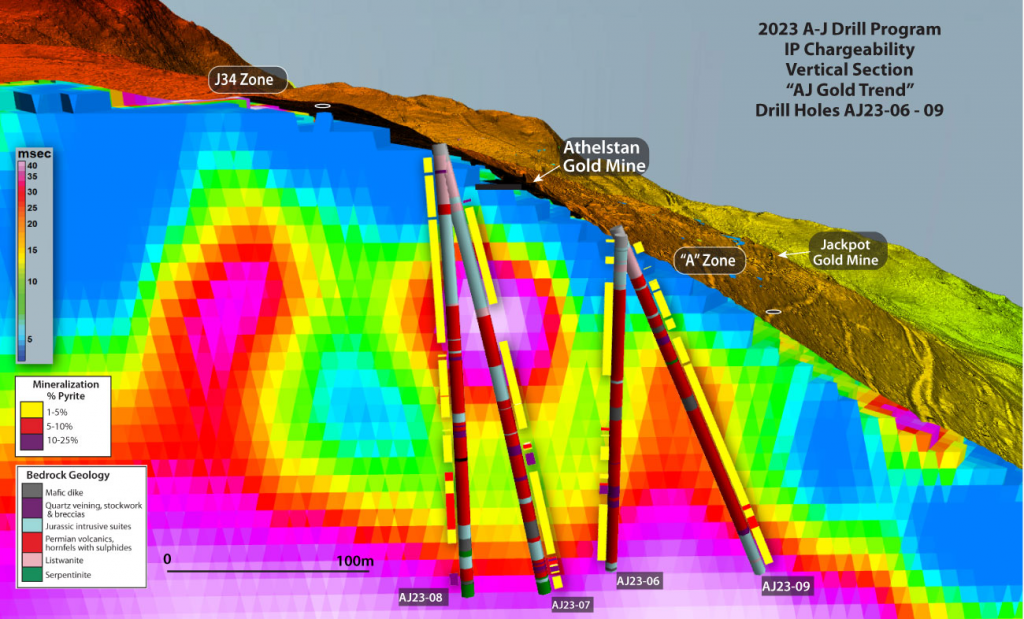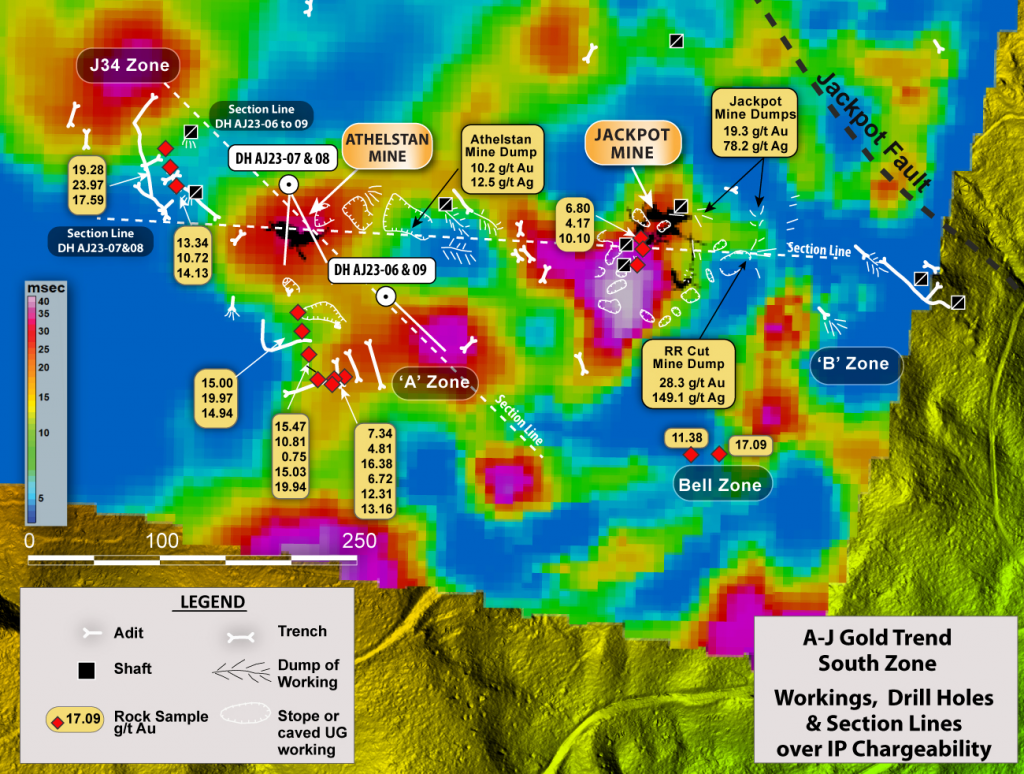
Belmont Resources (TSXV:BEA) has completed the logging of drill core samples from two additional drill holes, AJ23-06 and AJ23-09. These holes have revealed a second mineralized zone, extending over 100 meters, characterized by extensive silicic and phyllic alteration, as well as widespread sulphide mineralization.
George Sookochoff, CEO of Belmont Resources, commented in a press release: “I am certainly pleased with the visuals of the drill core thus far and in particular the lengths of the mineralization situated both under and nearby the Athelstan gold mine. We were targeting and believe to have located one or more feeder systems to the extensive gold mineralization at surface. If assay results indeed support the visuals then we will have several more good targets to test in Q1 2024, in particular underneath the Jackpot mine.”
The drilling operations, specifically targeting the ‘A’ Zone situated 100 meters southeast of holes AJ23-07 and AJ23-08, were focused beneath the surface gold mineralization. Both AJ23-06 and AJ23-09 were drilled over the same geophysical anomaly beneath the Athelstan gold mine. Previously, holes AJ23-07 and AJ23-08 had intersected a 100-meter mineralized zone directly below this mine.
The recent drilling in the South Zone, encompassing all four diamond drill holes, has consistently intersected silica, silica-carbonate, and phyllic alteration over 100-meter intervals. These mineralized zones, located directly beneath and adjacent to the Athelstan mine, suggest a potential 100-meter extension along the Athelstan gold zone trend. The drill cores have shown signs of multi-meter quartz shear and stockwork-style vein intersections in various lithologies, containing pyrrhotite, pyrite, and traces of chalco and arsenopyrite. These findings suggest possible conduits for deep-seated hydrothermal fluids, potentially linked to gold deposits previously mined in the area.
Furthermore, shallow listwanite units, ranging from oxidized to unweathered states, have been consistently found, along with extensive alteration zones showing moderate sulphide mineralization at depths not previously explored by historic drilling or mining activities.
Belmont’s recently concluded drilling program comprised nine holes, spanning 2,000 meters, and aimed to investigate several coincident geophysical-geological anomalies on the A-J property. The North Zone was explored through holes AJ23-01 to 05, while the South Zone was the focus of holes AJ23-06 to 09.

The South Zone drilling was particularly aimed at identifying a potential feeder structure for near-surface gold mineralization. This zone is part of a 1.0 km mineralized gold trend, which includes the Athelstan and Jackpot mines, historically producing significant amounts of gold and silver.
A 2002 report by R.E. Miller B.Eng., P.Geo, estimated a potential resource of 2,000-5,000 ounces of gold in the surface and near-surface areas of the A-J Group. This estimation was based on prior trenching results and sampling from mine dumps.
Gold mineralization in this zone has been linked to 2020 IP survey data, which indicated subsurface chargeability and resistivity highs, along with magnetic lows. These features are interpreted as signs of sulphide mineralization and alteration zones.
Core logging for all four South Zone drill holes is now complete, with samples sent to MSA Labs in Langley, B.C. for further analysis. Logging of the North Zone holes is ongoing and expected to be completed shortly.
Listwanite, a key mineral in this context, is associated with high-grade gold mineralization. The historic production on the property, mainly from the South Zone, has targeted massive sulfide and oxidized sulfide zones within listwanite. The process of serpentinization, which involves gold assimilation in secondary sulfides or magnetite, is thought to play a role in the formation of these deposits. This is supported by the observed magnetic anomalies within the property.
Notably, listwanite-associated lode-gold deposits are prominent in North America, with examples including the Mother Lode gold district in California and the Abitibi greenstone belt in Canada. High gold grades are often found in proximity to carbonate-altered ultramafic rocks, such as listwanite, a feature also observed in several multi-million-ounce gold deposits in British Columbia.
Highlights from the results are as follows:
- AJ23-06 and AJ23-09 intercept a second mineralized zone of over 100 meters of extensive silicic and phyllic alteration accompanied by widespread sulphide mineralization .
- Mineralization now intersected over 100 metre durations in all four diamond drill holes directly beneath and nearby the Athelstan mine.




 Follow us on Twitter
Follow us on Twitter Become our facebook fan
Become our facebook fan










Comments are closed.